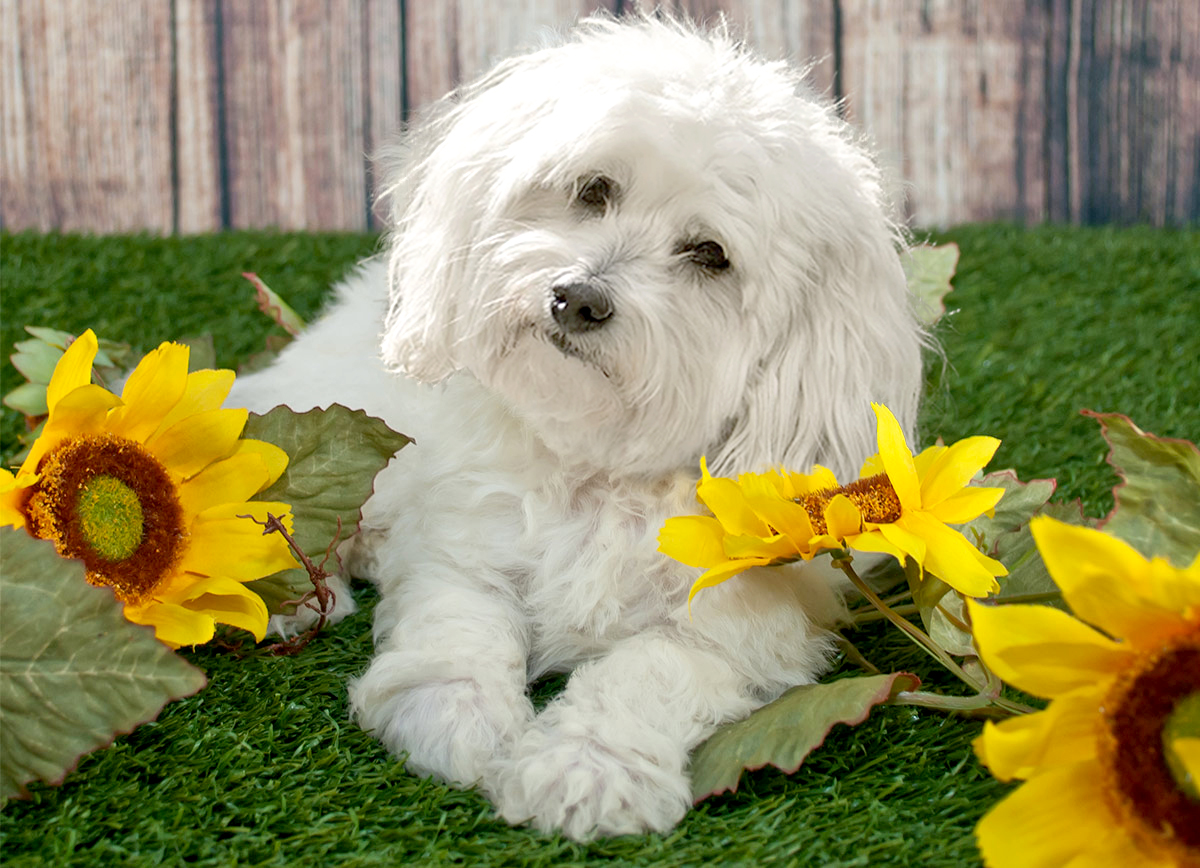Charlie’s Corner is the domain of Charlie, the furry four-legged lady’s man of Market Common. Each month, he’ll share information to help all new, visiting, and existing doggie community members get the most out of life alongside their human companions. Here, we’ll feature his reflections on what it’s like to be a dashing downtown doggie, as he reminds all of us how to play well together.
This month, Charlie celebrates all the delights that the May season has to offer and gets in some additional relaxation time inspired by social distancing.
“Since we’re all social distancing these days, I’m taking some time to self-pamper a bit more. For me that means extra long naps in the sun; practicing some of my favorite stretches, like downward-facing dog (how could it not be my favorite? My species practically invented it), and the lion’s breath.
Megan also gave me a mud bath (makes my fur extra shiny), and together we tried the old cucumber on the eyes trick— but I got confused and ate mine. Hey, what do you want? I may be literary but I still have my instincts. I now know that cucumbers aren’t really my cuisine d’choice but it’s all part of the journey my friends.
Now when I’ve had enough of relaxation, that’s when I settle down with my dog bowl of water and engage in my next favorite thing to do after eating, sleeping, and being loved on— research.
May has always felt like a soothing, reassuring kind of month to me. As if it’s saying, ‘don’t worry, all will be well. Summer is on its way just behind me.’ If May had a personality, it would be light, refreshing, upbeat, dancing, and celebratory. So recently, I felt inspired to look a little more deeply at the customs and traditions that people have employed across the ages to usher in this month.
Over 2000 years ago and possibly longer than that, the Romans celebrated the advent of May as the start of summer, with a festival called Floralia. This festival celebrated the Roman goddess of flowers, Flora.
As one of the most ancient goddesses, she was also one of the most important, as she was responsible for everything that grew and flourished, and therefore, fed and nourished the people. The festival was marked by dancing, the gathering of flowers, and general merriment, as well as more licentious-themed theatrical performances to further commemorate the importance of fecundity.
In time, the festival became an official Roman holiday, with customs and practices that varied but were still centered on the importance of flowers. People would scatter seeds and wore fresh wreaths of flowers in their hair.
The Celts had their spring celebration in the form of Beltane— a word which roughly means “return of the sun.” The long, cold winter months were also dark that far north of the equator. The sun-starved people believed that during the winter months the sun was held prisoner, and only released in the spring and summer to rule the sky. The people would celebrate the sun’s return with fire ceremonies, feasting, and rituals to safeguard the land, people, cattle and crops. It was one of the most significant rituals for the Celts.
Over time, these rituals died out to be replaced with the European custom of Maypole dancing on the first of May. Origins of how this practice began are a bit murky, but it easily could have been a natural extension of people gathering, dancing and celebrating.
By the 1300s, it was a popularly entrenched practice amongst the people of the British Isles and continues in some parts of the world to this day. Participants gather around a large pole holding brightly colored ribbons, and dance around it in a circle until the ribbons are wound, and then dance the other direction to unwind them; the action a symbol of the lengthening days.
I just love learning about the ways that ancient people celebrated the seasons. How about you?
What are you doing this May to celebrate the longer days and the blossoming beauty all around us?”
Until next time,

























